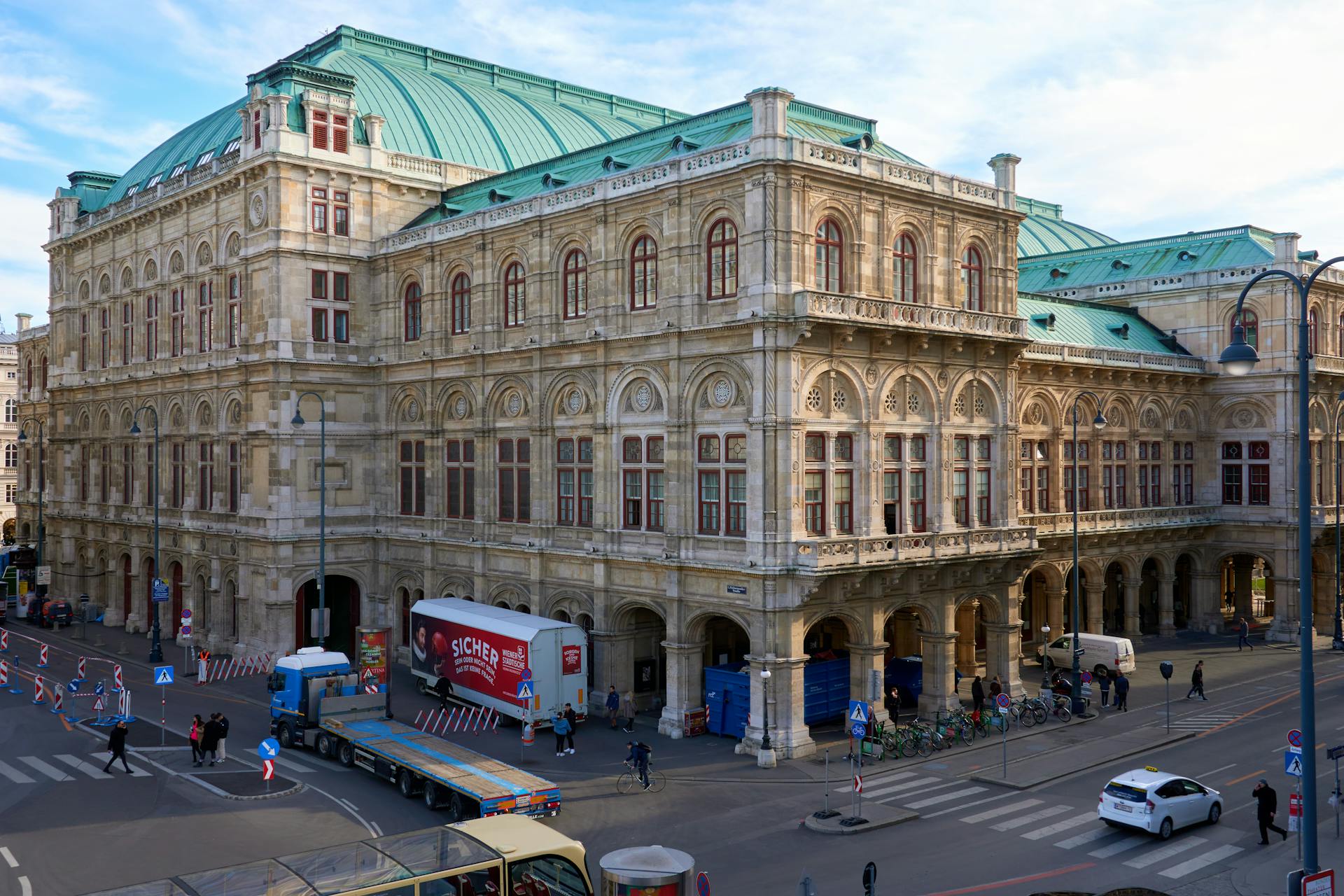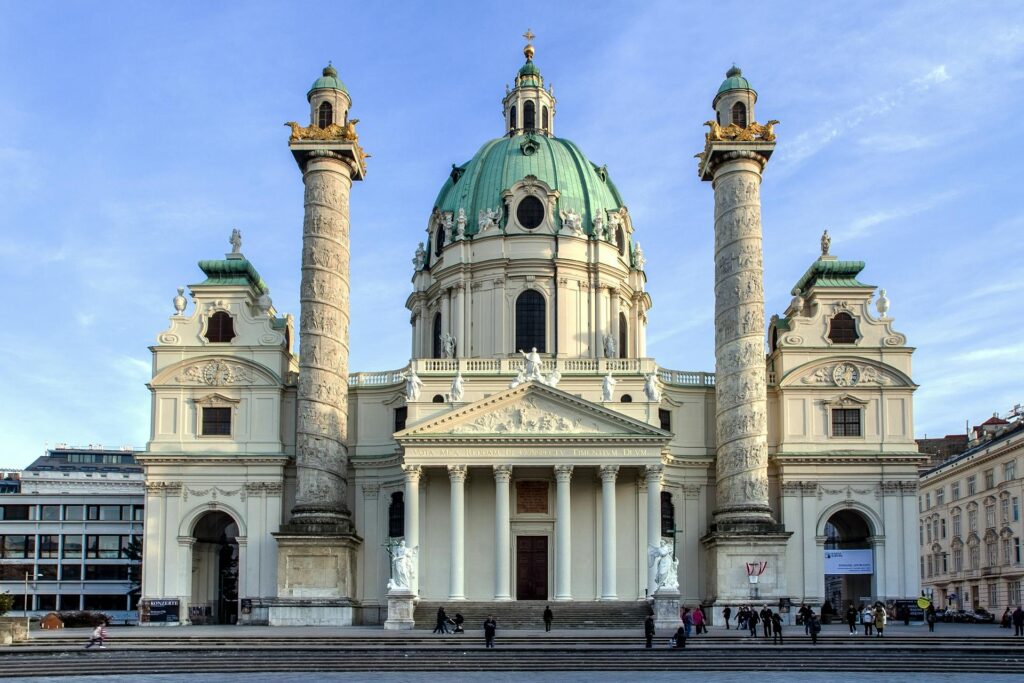Have you ever found yourself daydreaming about wandering through a city steeped in history and marveling at grand architecture? Vienna, with its imperial architecture, is just the place to fulfill such dreams. Famous for its opulent buildings that encapsulate the extravagance of the Baroque and Secessionist styles, Vienna offers an architectural journey that feels like stepping into a storybook. From grandiose palaces to elegant secessionist masterpieces, let’s explore the grandeur of Vienna’s imperial architecture.
The Baroque Beginnings: Vienna’s Opulence Unveiled
The Baroque era in Vienna was all about drama, movement, and grandeur. Walking through the city, you can’t miss the extravagant facades and intricate details that define this period. The Schönbrunn Palace, a UNESCO World Heritage site, stands as a testament to this opulence. As you wander through its grand halls, it’s easy to imagine the lavish lifestyle of the Habsburgs, who called this place home. The sheer size and splendor of the palace, with its beautiful gardens and opulent rooms, embody the essence of Baroque architecture.
The Belvedere Palace, another Baroque masterpiece, exemplifies grand architecture designed to impress. Comprising two magnificent palaces, the Upper and Lower Belvedere, this site was originally built as a summer residence for Prince Eugene of Savoy. Today, it’s a stunning art gallery that houses an extensive collection of Austrian art. The intricate frescoes and ornate details of the Belvedere capture the dramatic flair that defines Vienna’s imperial architecture, making it a must-visit for anyone interested in the city’s architectural heritage.
St. Charles’s Church: A Baroque Icon
St. Charles’s Church, or Karlskirche, is one of Vienna’s most iconic Baroque landmarks. Its imposing dome and twin columns make it a standout feature of the city’s skyline. Commissioned by Emperor Charles VI in gratitude for the end of the plague, the church is a perfect example of the Baroque style’s ability to convey power and divinity. The interior is just as breathtaking, with its stunning frescoes and grand altar that draw visitors into a world of faith and artistry.
The church is not just a place of worship; it’s also a testament to the craftsmanship of its architect, Johann Bernhard Fischer von Erlach. The integration of classical elements with Baroque exuberance showcases a unique blend that characterizes Vienna’s imperial architecture. The church remains a vibrant part of Vienna’s cultural scene, hosting concerts and events that attract both locals and tourists alike.
The Hofburg Palace: A Living Museum of Imperial Power
No exploration of Vienna’s imperial architecture would be complete without a visit to the Hofburg Palace. This sprawling complex served as the winter residence of the Habsburgs and is a living museum of imperial power. With over 2,600 rooms, it houses several museums, the Austrian National Library, and the office of the President of Austria. Each section of the palace tells a story of Vienna’s rich history and the enduring legacy of its rulers.
As you stroll through the Hofburg, you’ll encounter architectural styles ranging from Gothic to Baroque, reflecting centuries of construction and renovation. The Imperial Apartments offer a glimpse into the private lives of the Habsburgs, while the Sisi Museum pays tribute to Empress Elisabeth. The grandeur of the Hofburg Palace is a fitting representation of Vienna’s imperial architecture, where history and elegance intertwine.
The Secession Building: A New Vision of Art and Architecture
Transitioning from the Baroque to the Secessionist period in Vienna’s architectural journey, the Secession Building stands as a symbol of artistic rebellion and innovation. Founded by a group of artists who sought to break away from traditional styles, the building embodies the spirit of the Vienna Secession movement. Its iconic golden dome and minimalist design are a stark contrast to the opulence of Baroque architecture.
Inside, the Secession Building houses Gustav Klimt’s famous “Beethoven Frieze,” a masterpiece that captures the movement’s commitment to integrating art and architecture. The building itself, with its clean lines and decorative elements, represents a departure from the past, embracing a new vision that celebrates creativity and individuality. This shift in architectural style highlights the dynamic nature of Vienna’s imperial architecture, where tradition and innovation coexist.
Otto Wagner’s Influence: Modernism Meets Imperial Vienna
Otto Wagner, a pioneering architect of the Vienna Secession movement, played a crucial role in shaping the city’s architectural landscape. His designs reflect a modernist approach that still respects the grandeur of Vienna’s imperial architecture. The Austrian Postal Savings Bank is one of his most famous works, showcasing a functional yet elegant design that was ahead of its time.
Wagner’s influence can also be seen in the Stadtbahn (city railway) stations, where he combined practicality with artistic flair. His emphasis on function without sacrificing beauty resonates in his use of materials and innovative design concepts. Through his work, Wagner left an indelible mark on Vienna’s architecture, merging modernism with the city’s imperial past.
The Majestic Ringstrasse: Vienna’s Architectural Showcase
The Ringstrasse, a grand boulevard encircling the city center, is a showcase of Vienna’s architectural splendor. Built in the mid-19th century, it features a collection of monumental buildings that reflect the city’s imperial ambitions. From the State Opera House to the Parliament Building, the Ringstrasse is a testament to Vienna’s cultural and political significance.
Each building along the Ringstrasse tells a story of architectural innovation and historical importance. The Vienna State Opera, with its Renaissance Revival style, is a cultural icon where world-renowned performances continue to captivate audiences. The Parliament Building, inspired by Greek architecture, symbolizes democratic governance. Together, these structures form a cohesive narrative of Vienna’s imperial architecture, blending history with modernity.

The Vienna State Opera: A Cultural Gem
The Vienna State Opera is not just a building; it’s an institution that embodies the city’s rich cultural heritage. Its opulent design and world-class performances make it a must-visit for anyone exploring Vienna’s imperial architecture. The grand staircase and richly decorated interiors transport visitors to a bygone era of elegance and sophistication.
The opera house’s history is intertwined with Vienna’s cultural evolution. It has survived wars and renovations, standing as a resilient symbol of artistic excellence. Attending a performance at the Vienna State Opera is an experience like no other, offering a glimpse into the city’s dedication to preserving its cultural legacy while embracing new artistic expressions.
The Parliament Building: A Symbol of Democracy
Vienna’s Parliament Building, with its imposing neoclassical facade, stands as a symbol of democracy and governance. Designed by Theophil Hansen, it reflects the ideals of ancient Greece, emphasizing the values of democracy and civic responsibility. The building’s architecture is a powerful statement of Vienna’s imperial architecture, combining classical influences with modern aspirations.
Inside, the Parliament Building houses the National and Federal Councils, where Austrian lawmakers debate and shape the future of the nation. The grand halls and chambers are open to visitors, offering a unique insight into the workings of Austrian democracy. The Parliament Building’s architectural elegance and historical significance make it an essential stop on any tour of Vienna’s imperial architecture.
The Rathaus: Gothic Revival Grandeur
The Rathaus, or City Hall, is a stunning example of Gothic Revival architecture in Vienna. Its towering spires and ornate facade are reminiscent of medieval cathedrals, capturing the imagination of all who visit. Built in the late 19th century, the Rathaus is a symbol of Vienna’s civic pride and architectural prowess.
Inside, the grand halls and chambers serve as the seat of the city’s municipal government, hosting events and ceremonies that celebrate Vienna’s cultural and political life. The Rathausplatz, the square in front of the building, is a vibrant gathering place for locals and tourists alike, especially during festivals and markets. The Rathaus’s architectural beauty and historical significance make it a cornerstone of Vienna’s imperial architecture.
The Austrian National Library: A Treasure Trove of Knowledge
The Austrian National Library, housed within the Hofburg Palace, is one of the most beautiful libraries in the world. Its Baroque architecture and vast collection of books and manuscripts make it a treasure trove of knowledge and history. The State Hall, with its frescoed ceiling and ornate bookshelves, is a masterpiece of imperial architecture.
The library’s collection spans centuries, offering a glimpse into the intellectual and cultural achievements of Austria. From rare manuscripts to modern publications, the Austrian National Library serves as a guardian of the nation’s literary heritage. Visitors can explore exhibitions and immerse themselves in the rich history that defines Vienna’s imperial architecture.
The Albertina: Bridging Art and Architecture
The Albertina, located in the heart of Vienna, is a museum that bridges art and architecture. Its impressive collection of graphic art, including works by Dürer, Michelangelo, and Klimt, is housed in a stunning neoclassical building. The Albertina’s architecture reflects Vienna’s imperial grandeur, with its opulent facade and elegant interiors.
The museum’s history is as captivating as its collection. Originally a residential palace, the Albertina has evolved into a cultural landmark that attracts art lovers from around the world. The juxtaposition of its historical architecture with contemporary art exhibitions creates a dynamic cultural experience, highlighting Vienna’s commitment to preserving its imperial heritage while embracing modern creativity.
The Secessionist Legacy: Vienna’s Artistic Revolution
The Secessionist movement, with its emphasis on artistic freedom and innovation, left a lasting legacy on Vienna’s architecture. Its influence can be seen in the city’s modern buildings and public art installations, which continue to inspire new generations of artists and architects. The Secession Building itself remains a beacon of this legacy, attracting visitors who seek to explore Vienna’s imperial architecture through a contemporary lens.
Vienna’s commitment to preserving its architectural heritage while fostering innovation is evident in its urban landscape. The city’s blend of historical and modern architecture creates a vibrant tapestry that reflects its rich cultural heritage and dynamic future. As you explore Vienna, you’ll discover the enduring legacy of the Secessionist movement and its impact on the city’s imperial architecture.
Conclusion
Vienna’s imperial architecture is a captivating journey through time, where the opulence of the Baroque era meets the innovation of the Secessionist movement. The city’s grand palaces, cultural landmarks, and modernist masterpieces offer a rich tapestry of history, art, and architecture. As you wander through Vienna, you’ll experience a city that embraces its past while looking towards the future, creating a unique blend that is both timeless and ever-evolving. Whether you’re an architecture enthusiast or a curious traveler, Vienna’s imperial architecture promises to inspire and delight, leaving you with memories of a city that truly embodies grandeur and elegance.

Recent Posts
15 Floor Plan Graphic Styles That Will Elevate Your Presentation Game
The Role of Shadows in Architectural Storytelling
When Furniture Becomes Architecture: Blurring the Line